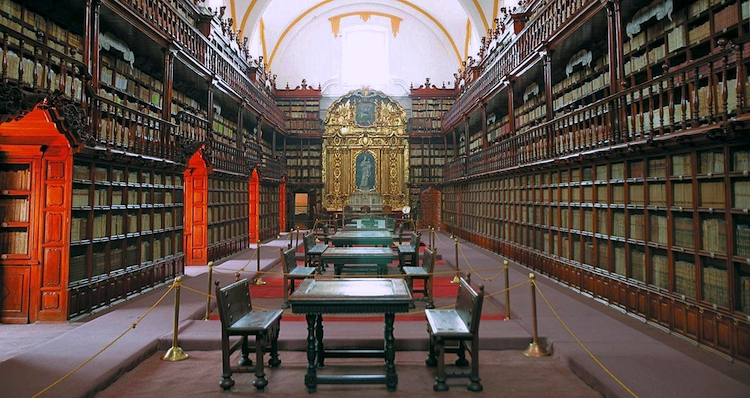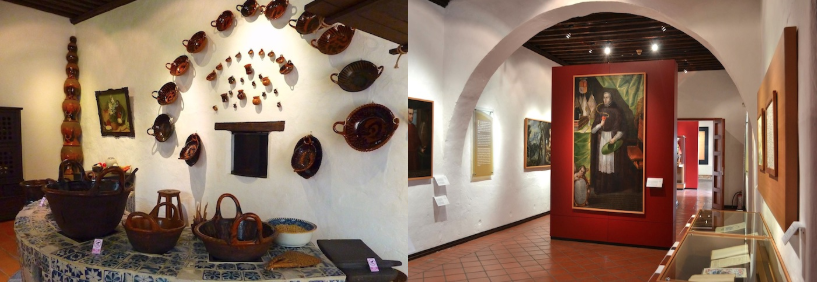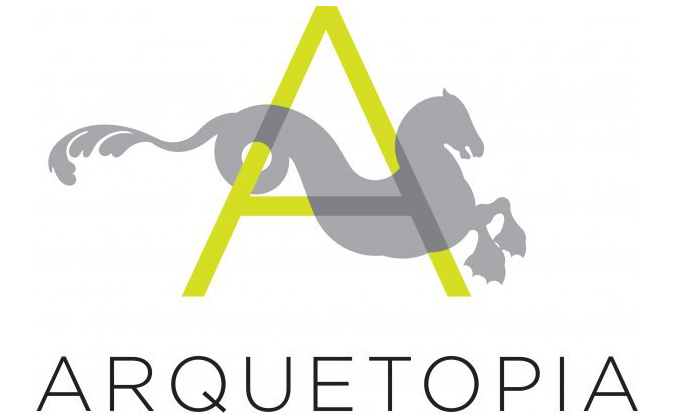The Crafting of the Discipline:
Art History or Cultural Research Program
Arquetopia Location: Puebla, Mexico

The Art History or Cultural Research Program is a non-instructional, non-production-based residency program open to researchers age 20 and over. In addition to the individual mentoring provided by our directorial and curatorial staff for personalized research assistance, resources, project guidance, and critique, participants work independently on-site and in our partnered spaces. As part of Arquetopia’s mission, we promote international experiences in the field of culture by facilitating research that addresses Mexico’s or Peru’s rich and diverse cultural and artistic heritage.
We recognize the importance of serious academic study in enriching the knowledge and narratives that form the foundation for all interpretations of art. In line with Nicolas Mirzoeff’s call in his essay Empty the Museum, Decolonize the Curriculum, Open Theory, we emphasize the need to challenge traditional structures and viewpoints in art history and cultural research. Mirzoeff argues for the dismantling of colonial narratives embedded in museum practices and educational curriculums, advocating for a more inclusive and decolonized approach to art and its histories. Therefore, we encourage curators and art historians to make a scholarly commitment to investigating images, art and visual culture, examining race, gender, sexuality, and class through visual expression, while engaging critically with the legacies of colonialism and sentimentalism and the ways in which they shape contemporary interpretations. By embracing these perspectives, we aim to create space for a broader, more inclusive dialogue in the study and presentation of art.
Arquetopia’s programs are distinguished by their commitment to international diversity in the approach to art history subjects. We understand that grasping the cultural context and complexity of countries like Mexico or Peru is crucial for the success of any project and cultural exchange. As Michael Baxandall discusses in Patterns of Intention, understanding a work of art requires examining three interconnected elements: the artist's intention, the social and cultural context in which the work was created, and the expectations of the intended audience. This "triangle of Baxandall" encourages a deeper exploration of the motivations behind artistic practices, considering not only the artist's goals but also the historical and societal influences that shaped the work, as well as how it was perceived by its viewers. Therefore, Arquetopia’s program opportunities focus on researching, learning, and creating by addressing subjects that are specific to and/or relevant to Mexico and Peru, ensuring that the narratives explored are deeply rooted in local contexts while also engaging with broader global discussions in art history.
1. The Connectivity of Concepts
The Art History or Cultural Research Program connects historical inquiry, cultural exploration, and scholarly investigation, encouraging a deeper understanding of how art and culture intersect within broader social, political, and historical contexts. Through academic visits and direct engagement with the local contexts, participants link their research to the lived experiences and knowledge of the region. They connect their studies of Mexican or Peruvian culture to larger conceptual frameworks, examining the histories of identity, resistance, and cultural exchange that have shaped the artistic practices in these countries.
2. The Practice of Unlearning
The Art History or Cultural Research Program encourages participants to critically examine and deconstruct preconceived notions about art, history, and cultural narratives. By interrogating the ideological legacies embedded in art history and cultural practices, participants engage in a process of unlearning—questioning dominant interpretations and rethinking historical frameworks. This process invites participants to challenge established narratives, unearth alternative histories, and reorient their research toward a more informed and nuanced understanding of the cultural heritage and artistic practices of Mexico or Peru.
3. The Rhythm of Creating
In the Art History or Cultural Research Program, rhythm emerges as a space where participants question the interpretation of the "body" implicit in all images by weaving together research and intuition to challenge history and dominant ideology. The exploration of cultural practices, historical narratives, and artistic traditions encourages participants to engage in a dynamic process where inquiry, questioning, and discovery unfold in constant dialogue. This approach transforms scholarly work into a site of active exploration, where intuition becomes a method for rethinking narratives, deepening material understanding, and forging new connections between past and present.
4. The Ethics of Movement
The Art History or Cultural Research Program emphasizes the ethics of movement by asking participants to consider the responsibility that comes with engaging with historically rich cultural and artistic knowledge. Whether through the transmission of knowledge, the cultural significance of practices and traditions, or the exploration of historical narratives, participants are invited to reflect on how their research can navigate difference, reciprocity, and responsibility. Additionally, the encounter with the audience through their work becomes an ethical opportunity to engage with questions, prompting a deeper reflection on how scholarly choices shape understanding, challenge narratives, and open spaces for dialogue. In this way, movement—of ideas, cultures, and histories—remains a site of ethical engagement.
Each proposed project offers a unique research experience, allowing participants to pursue their work free from other academic obligations, engage with diverse collections, and participate in the intellectual life of the city. We welcome students and professionals from various backgrounds and methodologies, who are interested in immersing themselves in the study of Mexican or Peruvian culture while spending time in the historic Spanish colonial cities of Puebla or Cusco.

The Art History or Cultural Research Program is a non-instructional, non-production-based residency program open to researchers age 20 and over. In addition to the individual mentoring provided by our directorial and curatorial staff for personalized research assistance, resources, project guidance, and critique, participants work independently on-site and in our partnered spaces. As part of Arquetopia’s mission, we promote international experiences in the field of culture by facilitating research that addresses Mexico’s or Peru’s rich and diverse cultural and artistic heritage.
We recognize the importance of serious academic study in enriching the knowledge and narratives that form the foundation for all interpretations of art. In line with Nicolas Mirzoeff’s call in his essay Empty the Museum, Decolonize the Curriculum, Open Theory, we emphasize the need to challenge traditional structures and viewpoints in art history and cultural research. Mirzoeff argues for the dismantling of colonial narratives embedded in museum practices and educational curriculums, advocating for a more inclusive and decolonized approach to art and its histories. Therefore, we encourage curators and art historians to make a scholarly commitment to investigating images, art and visual culture, examining race, gender, sexuality, and class through visual expression, while engaging critically with the legacies of colonialism and sentimentalism and the ways in which they shape contemporary interpretations. By embracing these perspectives, we aim to create space for a broader, more inclusive dialogue in the study and presentation of art.
Arquetopia’s programs are distinguished by their commitment to international diversity in the approach to art history subjects. We understand that grasping the cultural context and complexity of countries like Mexico or Peru is crucial for the success of any project and cultural exchange. As Michael Baxandall discusses in Patterns of Intention, understanding a work of art requires examining three interconnected elements: the artist's intention, the social and cultural context in which the work was created, and the expectations of the intended audience. This "triangle of Baxandall" encourages a deeper exploration of the motivations behind artistic practices, considering not only the artist's goals but also the historical and societal influences that shaped the work, as well as how it was perceived by its viewers. Therefore, Arquetopia’s program opportunities focus on researching, learning, and creating by addressing subjects that are specific to and/or relevant to Mexico and Peru, ensuring that the narratives explored are deeply rooted in local contexts while also engaging with broader global discussions in art history.
1. The Connectivity of Concepts
The Art History or Cultural Research Program connects historical inquiry, cultural exploration, and scholarly investigation, encouraging a deeper understanding of how art and culture intersect within broader social, political, and historical contexts. Through academic visits and direct engagement with the local contexts, participants link their research to the lived experiences and knowledge of the region. They connect their studies of Mexican or Peruvian culture to larger conceptual frameworks, examining the histories of identity, resistance, and cultural exchange that have shaped the artistic practices in these countries.
2. The Practice of Unlearning
The Art History or Cultural Research Program encourages participants to critically examine and deconstruct preconceived notions about art, history, and cultural narratives. By interrogating the ideological legacies embedded in art history and cultural practices, participants engage in a process of unlearning—questioning dominant interpretations and rethinking historical frameworks. This process invites participants to challenge established narratives, unearth alternative histories, and reorient their research toward a more informed and nuanced understanding of the cultural heritage and artistic practices of Mexico or Peru.
3. The Rhythm of Creating
In the Art History or Cultural Research Program, rhythm emerges as a space where participants question the interpretation of the "body" implicit in all images by weaving together research and intuition to challenge history and dominant ideology. The exploration of cultural practices, historical narratives, and artistic traditions encourages participants to engage in a dynamic process where inquiry, questioning, and discovery unfold in constant dialogue. This approach transforms scholarly work into a site of active exploration, where intuition becomes a method for rethinking narratives, deepening material understanding, and forging new connections between past and present.
4. The Ethics of Movement
The Art History or Cultural Research Program emphasizes the ethics of movement by asking participants to consider the responsibility that comes with engaging with historically rich cultural and artistic knowledge. Whether through the transmission of knowledge, the cultural significance of practices and traditions, or the exploration of historical narratives, participants are invited to reflect on how their research can navigate difference, reciprocity, and responsibility. Additionally, the encounter with the audience through their work becomes an ethical opportunity to engage with questions, prompting a deeper reflection on how scholarly choices shape understanding, challenge narratives, and open spaces for dialogue. In this way, movement—of ideas, cultures, and histories—remains a site of ethical engagement.
Each proposed project offers a unique research experience, allowing participants to pursue their work free from other academic obligations, engage with diverse collections, and participate in the intellectual life of the city. We welcome students and professionals from various backgrounds and methodologies, who are interested in immersing themselves in the study of Mexican or Peruvian culture while spending time in the historic Spanish colonial cities of Puebla or Cusco.
Access to Archives, Libraries, and Experts
We encourage all residents to develop interdisciplinary investigations to gain a deeper understanding of their subject and artistic practice. As part of our commitment to expanding local knowledge and fostering critical investigation of the history of Mexico and Peru, we provide access to experts in the humanities, as well as unique archives, resources, and institutions. To ensure we provide the most relevant support, we ask residents to share more information regarding their research focus and specific interests in particular archives, explaining why they wish to engage with these resources. This helps us tailor our support to best meet the needs of each individual project.
Palafoxiana Library

Palafoxiana Library
The libraries of the religious orders in Mexico were located in Puebla, Morelia, and Oaxaca. The Palafoxiana Library in Puebla is the oldest library in the Americas and the only one of the three that has remained original and intact, as it has been continuously conserved. Its origins date back to 1646, when a personal collection of approximately 5,000 volumes was donated to the Colegio de San Juan y San Pedro by Bishop Juan de Palafox y Mendoza. In 1773, Bishop Don Francisco Fabián y Fuero ordered the construction of the Palafoxiana Library in the historic center of Puebla to house Bishop Palafox's donation. The walls of the 43-meter-long library are fitted with two tiers of bookshelves made from ayacahuite pine, cedar, and coloyote wood. The western wall features a mid-14th-century retable of the Madonna of Trapana, painted by Nino Pasano. Throughout the colonial period, numerous prints and manuscripts were donated by bishops, religious institutions, and private individuals, and the library grew to rival the finest libraries of 18th-century Europe. By the 19th century, the library's collection had expanded to over 41,000 volumes, necessitating a third tier of bookshelves. The baroque cloistered building still retains many architectural and decorative elements, including the original 18th-century wooden bookcases.
José María Lafragua Library
The José María Lafragua Library is the main library of the Universidad Autónoma de Puebla (BUAP). The university traces its origins to the late 16th century, at the College of the Holy Spirit of the Society of Jesus, and opened in 1885 as the library of the College of the State of Puebla. The library houses books from various local religious orders, including 2,300 volumes from the personal collection of D. José María Lafragua, along with other historical documents. Today, the former school is part of the Autonomous University of Puebla, and its Historical Library holds approximately 90,000 volumes, over 65% of which are Rare Books. The collection includes important printed works, newspapers from the 1800s, archival documents, and many other heritage items.
Museum of Art of the Former Convent of Saint Monica
The Museum of Art of the Former Convent of Saint Monica houses one of the largest collections of religious art, with a special focus on femininity. It features four main collections spanning from the 1600s to the 1800s, with original works from the Convents of Saint Monica (Augustinian Recollect), Saint Catalina (Dominican), Saints Joachim and Anne (Capuchins), and Soledad (Discalced Carmelites). The collection includes artworks by prominent artists such as Juan Correa, Pascual Pérez, Juan de Villalobos, José Patricia Polo, Luis Berrueco, José de Marimón, Miguel Cabrera, Nicolás Rodríguez Juárez, Francisco Castillo, Miguel Jerónimo de Zendejas, Lorenzo Zendejas, Rafael Morante, as well as works attributed to Juan Tinoco and Joseph Magón. Additionally, the collection contains gilded sculptures, paintings, books, documents (including recipes), textiles, and various objects.
PROGRAM DURATION / TIME PERIOD
Workspace:
PROGRAM TUITION INFO & APPLICATION DEADLINES
Juan Crisóstomo Méndez Photographic Library
The Juan Crisóstomo Méndez Photographic Library, managed by the Government of the State of Puebla, holds a public collection of 230,000 images organized into 15 funds. The collection includes part of the work of Juan Crisóstomo Méndez, including negatives, positives, planners, albums, and other objects. The archive's mission is to continue studying and researching visual culture, the visual heritage of the 15 funds, and contemporary photography.

Museum of Art of the Former Convent of Saint Monica

Museum of Art of the Former Convent of Saint Monica
The Museum of Art of the Former Convent of Saint Monica houses one of the largest collections of religious art, with a special focus on femininity. It features four main collections spanning from the 1600s to the 1800s, with original works from the Convents of Saint Monica (Augustinian Recollect), Saint Catalina (Dominican), Saints Joachim and Anne (Capuchins), and Soledad (Discalced Carmelites). The collection includes artworks by prominent artists such as Juan Correa, Pascual Pérez, Juan de Villalobos, José Patricia Polo, Luis Berrueco, José de Marimón, Miguel Cabrera, Nicolás Rodríguez Juárez, Francisco Castillo, Miguel Jerónimo de Zendejas, Lorenzo Zendejas, Rafael Morante, as well as works attributed to Juan Tinoco and Joseph Magón. Additionally, the collection contains gilded sculptures, paintings, books, documents (including recipes), textiles, and various objects.
PROGRAM DURATION / TIME PERIOD
Flexible sessions of 3 to 5 weeks in Puebla. Dates are not predetermined but are proposed by the applying researcher.
WHAT THIS MENTORED, NON-INSTRUCTIONAL PROGRAM INCLUDES
WHAT THIS MENTORED, NON-INSTRUCTIONAL PROGRAM INCLUDES
Staff Support:
- A weekly meeting with our directorial and curatorial staff for personalized mentoring, research assistance, project guidance, and critique
- Furnished, private bedroom
- 24-hour access to the kitchen for participants to prepare their own meals; meals/food are the participant’s responsibility
- Wireless Internet
- Use of Arquetopia’s common spaces including outdoor terraces
- Shared, serviced (single) bathrooms with modern fixtures and showers
- Housekeeping
- Personal workspace with desk or table provided
PROGRAM TUITION INFO & APPLICATION DEADLINES
E-mail This email address is being protected from spambots. You need JavaScript enabled to view it. for tuition info and application deadlines for this program.
TO APPLY
TO APPLY
Click here to apply for this mentored, non-instructional program.









